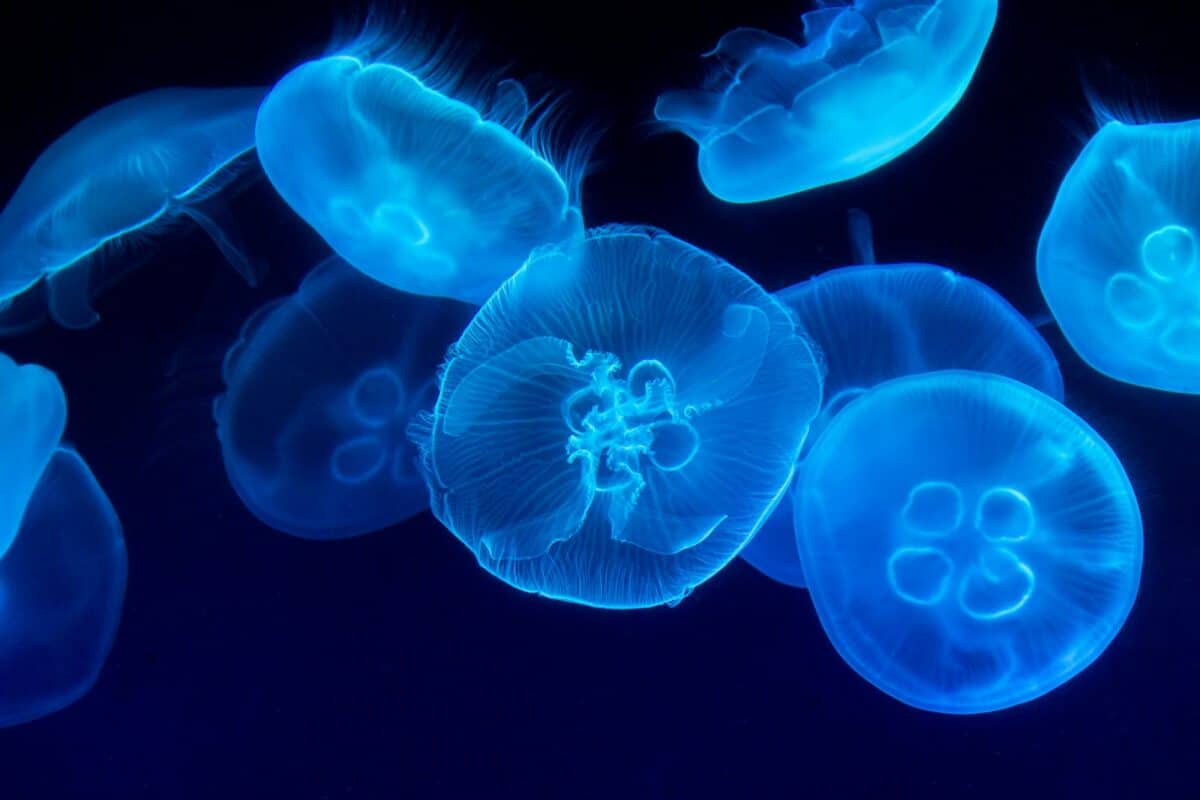Living without a brain might seem impossible, but nature has found fascinating ways to allow certain organisms to thrive without this complex organ that most animals depend on. From the depths of the ocean to your garden, brainless creatures have developed alternative strategies for sensing their environment, finding food, and reproducing successfully. These organisms challenge our understanding of what constitutes life and consciousness, showcasing nature’s remarkable ability to create diverse survival mechanisms. Let’s explore fourteen incredible creatures that manage to survive—and in many cases thrive—without having a brain.
Jellyfish Masters of the Current

Jellyfish have survived for over 650 million years without developing a brain, making them one of the oldest brainless species on our planet. Instead of a centralized nervous system, these gelatinous creatures possess a nerve net—a simple arrangement of neurons that forms a loose network throughout their bell-shaped bodies. This primitive system allows jellyfish to respond to basic stimuli like touch, light, and chemical cues in their environment. Despite lacking a brain, many jellyfish species have eyes that can detect light and darkness, helping them navigate toward prey and away from predators. Their successful survival strategy has allowed them to thrive in virtually every ocean on Earth, from shallow coastal waters to the deepest marine trenches, demonstrating that complex thought isn’t always necessary for evolutionary success.
Sea Stars Decentralized Intelligence

Sea stars (commonly called starfish) navigate their marine environments without a brain, instead relying on a remarkably decentralized nervous system. Each arm of a sea star contains part of its nervous system, connected by a central ring that coordinates their movements and responses. This unique arrangement allows sea stars to perform complex behaviors like hunting prey, escaping predators, and even regenerating lost limbs. In fact, some species can regenerate an entire new sea star from just a single arm with a portion of the central disc attached. Their nerve nets can process sensory information from specialized cells that detect light, touch, and chemicals, enabling them to locate food and navigate their surroundings effectively. This distributed intelligence demonstrates an entirely different evolutionary approach to survival compared to brain-centered organisms.
Sea Cucumbers Simplicity in Design

Sea cucumbers represent another fascinating example of brainless marine animals that have thrived for millions of years. These echinoderms possess only a simple ring of neural tissue and radiating nerves rather than a centralized brain. Despite this seemingly primitive nervous system, sea cucumbers display remarkable defensive adaptations, including the ability to expel their internal organs to distract predators before regenerating them later—a process called evisceration. They can also alter their body’s stiffness, becoming rigid or flexible as needed to escape threats or wedge themselves into protective crevices. Some species even release toxic compounds to deter predators. Their ability to perform these complex defensive maneuvers without a brain highlights how alternative neural arrangements can produce sophisticated behaviors when shaped by evolutionary pressures.
Corals Colonial Intelligence
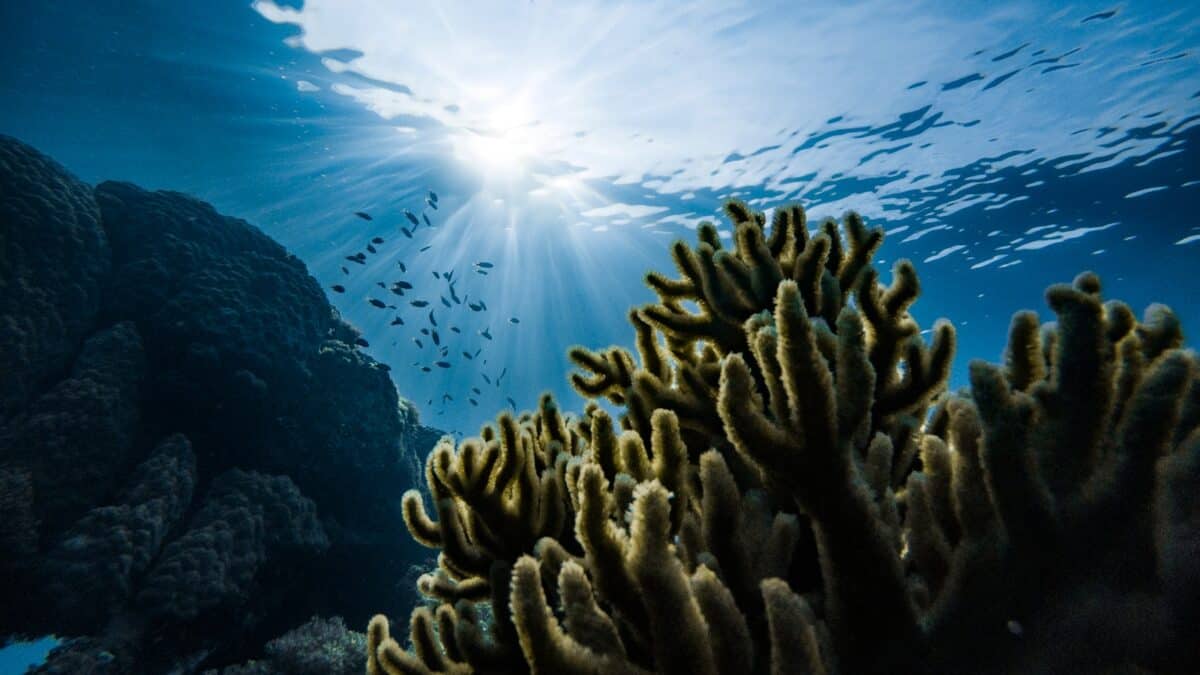
Corals might appear plant-like, but they are actually animals that survive without brains through a collective, colonial existence. Each coral colony consists of thousands or even millions of individual polyps, tiny organisms related to jellyfish that share nutrients and information through connected tissue. Instead of having a centralized brain, corals possess a nerve net that allows them to respond to environmental stimuli like touch, light, and water quality changes. This simple nervous system enables surprisingly complex behaviors, including coordinated feeding strategies where polyps extend their tentacles simultaneously to capture passing plankton, and defensive responses where an entire colony can retract when threatened. Coral colonies can live for centuries or even millennia, with the Great Barrier Reef representing one of Earth’s oldest and largest living structures—all created by tiny brainless animals working in concert.
Sea Anemones Predators Without Processing Power
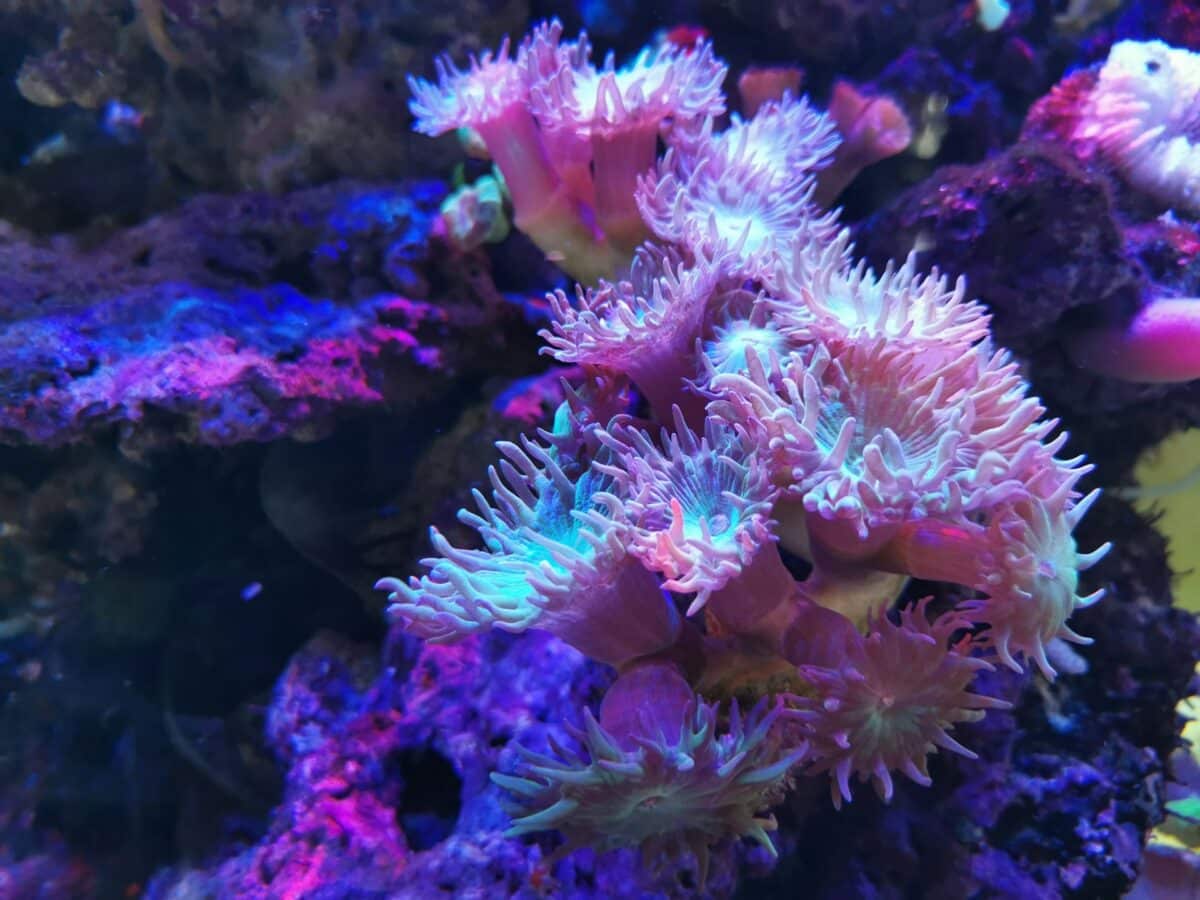
Sea anemones are carnivorous relatives of jellyfish and corals that have evolved to be successful predators despite lacking a brain. These colorful creatures possess a nerve net system similar to other cnidarians, with sensory cells distributed throughout their bodies that can detect chemical signals, touch, and light intensity changes. When a potential meal brushes against their tentacles, specialized cells called cnidocytes fire tiny harpoon-like structures filled with toxins to paralyze prey. This entire hunting process occurs without cognitive thought, relying instead on simple stimulus-response mechanisms. Some sea anemone species form symbiotic relationships with clownfish or crabs, providing protection for these animals while receiving cleaning services and food scraps in return—a complex ecological interaction managed without any brain function. Many anemones can live for decades or even centuries in the wild, demonstrating the long-term success of their brainless lifestyle.
Sponges Earth’s Simplest Animals
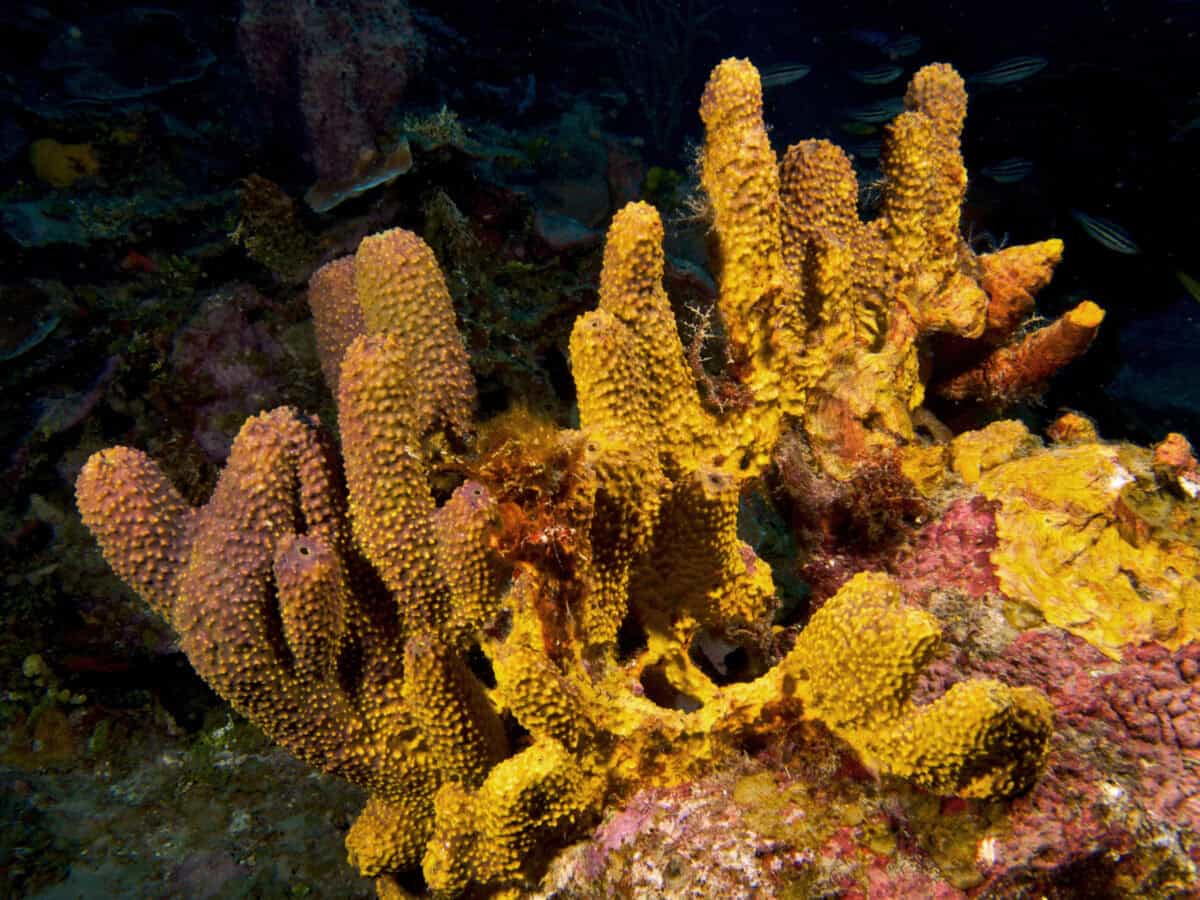
Sponges represent the most basic multicellular animals on Earth, existing without not only brains but any neurons or nervous system whatsoever. These ancient organisms, which have been filtering water on our planet for over 600 million years, rely purely on cellular-level responses to interact with their environment. Despite this extreme simplicity, sponges can perform essential life functions like feeding, reproduction, and self-defense through chemical signaling between cells. They filter enormous volumes of water—some species processing thousands of liters daily—extracting oxygen and food particles with remarkable efficiency. When disturbed, specialized contractile cells can slowly close their pores or release toxic compounds to deter predators. Recent research has even found evidence that sponges can “sneeze” to clear debris from their filtering systems, showing that even without neurons, these creatures have evolved sophisticated physiological mechanisms for survival.
Placozoans Living Simplicity
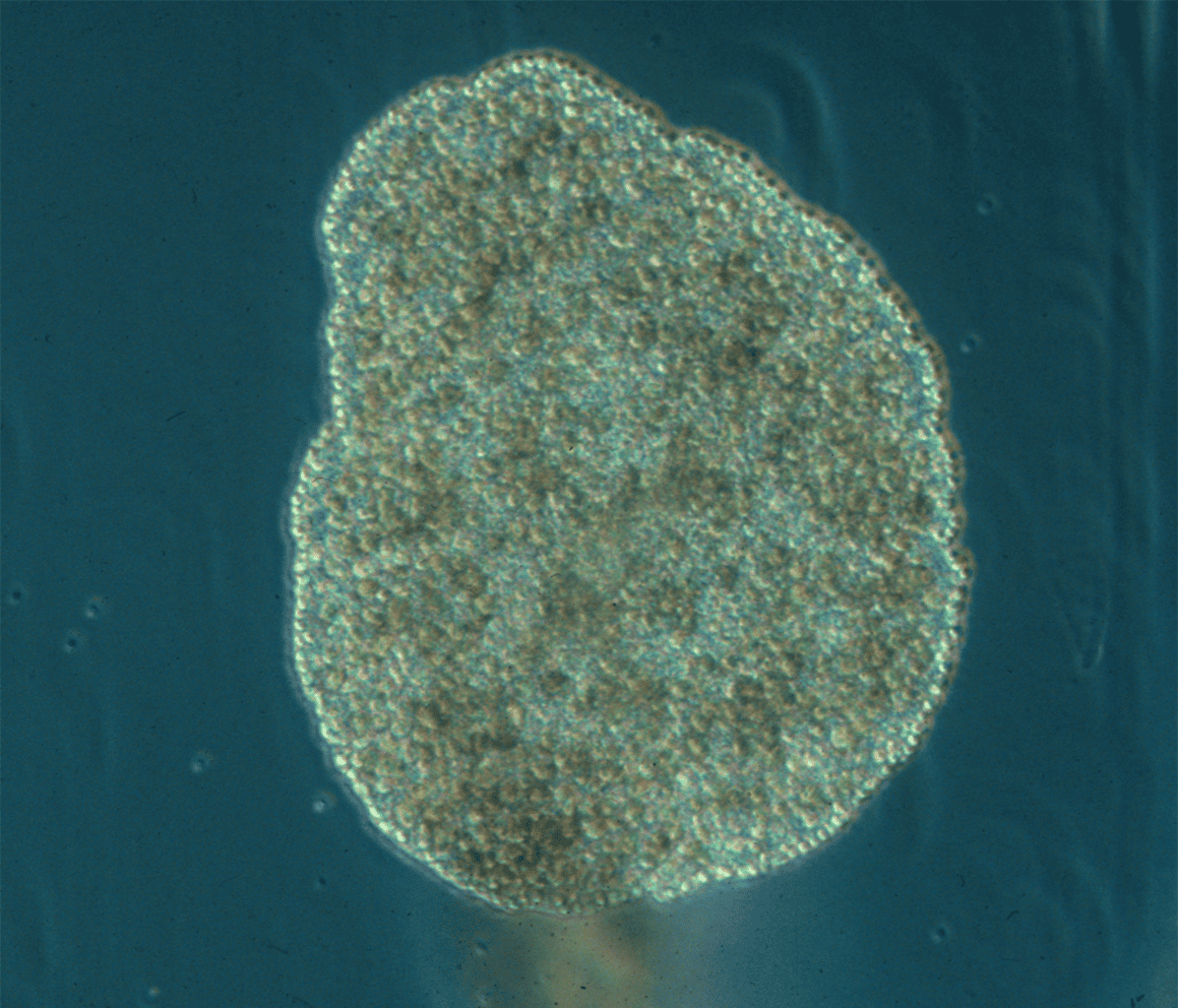
Placozoans represent one of the simplest multicellular organisms alive today, existing as microscopic, flattened creatures that resemble amoebas more than animals. Discovered in 1883 on the glass of a marine aquarium, these tiny organisms lack not only brains but also organs, tissues, and even a distinct body plan. Their entire body consists of just a few thousand cells arranged in three layers, yet they can move, feed, and reproduce successfully. Placozoans glide along surfaces searching for microalgae and bacteria, which they digest externally by secreting enzymes. Despite their extreme simplicity, these organisms demonstrate clear sensory abilities, changing direction when encountering food sources or avoiding harmful stimuli. Genetic studies have revealed that placozoans possess many genes associated with neural development in more complex animals, providing clues about the evolutionary origins of nervous systems and brains.
Slime Molds Collective Problem-Solvers

Slime molds challenge our understanding of intelligence with their remarkable problem-solving abilities despite having no brain or nervous system. These organisms exist as single cells for much of their life cycle, but when food becomes scarce, thousands or millions of individual cells can aggregate to form a mobile slug-like structure that can move toward food sources. Scientists have demonstrated that slime molds can solve mazes, create efficient networks similar to human-designed transportation systems, and even “remember” patterns of environmental conditions they’ve previously encountered—all without neurons. The slime mold Physarum polycephalum has been shown to create networks between food sources that mimic the efficiency of the Tokyo rail system, demonstrating optimization principles that engineers strive to achieve. These abilities emerge from the collective behavior of simple cells responding to chemical signals, showing how complex behaviors can arise from simple components working together.
Hydras Immortal and Brainless
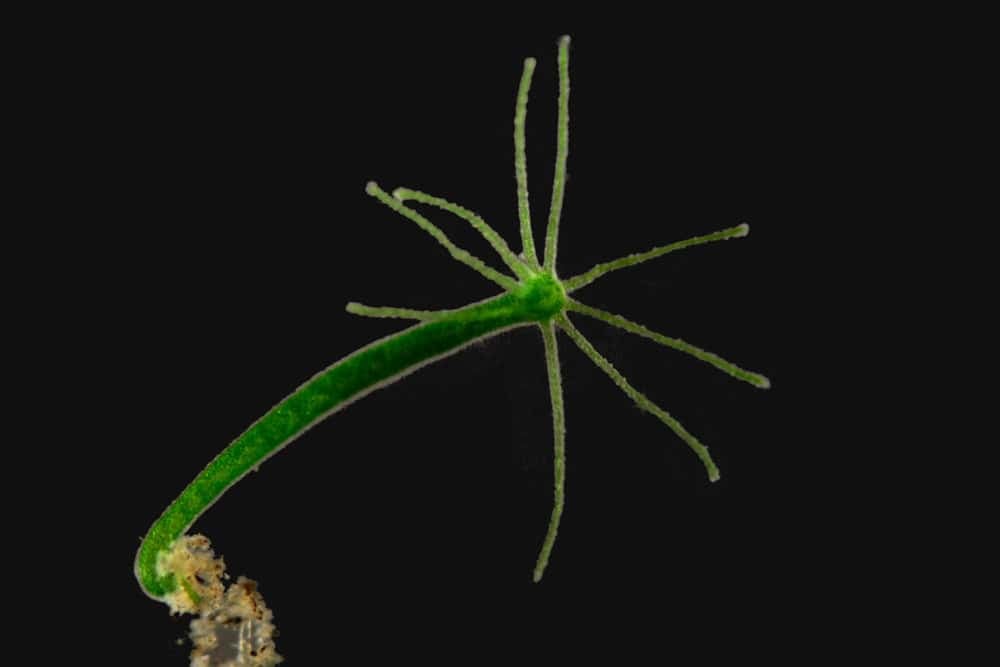
Hydras are tiny freshwater relatives of jellyfish that possess remarkable regenerative abilities while functioning without a brain. These tube-shaped creatures, typically only a few millimeters long, have a simple nerve net instead of a centralized nervous system. What makes hydras particularly fascinating is their biological immortality—they show no signs of aging and theoretically could live forever if not killed by predators or environmental changes. If cut into pieces, each fragment can regenerate into a complete new animal, and they can reproduce asexually by simply budding off new individuals. Despite lacking a brain, hydras can capture prey using tentacles armed with stinging cells, respond to light and chemical signals, and even demonstrate simple learning in the form of habituation to repeated stimuli. Their impressive capabilities with minimal neural equipment have made them important research subjects for understanding the evolution of nervous systems and the biological mechanisms of aging.
Flatworms Regeneration Champions

While most flatworms do possess a simple brain, the planarian flatworm deserves special mention because it can completely regenerate its brain if decapitated—and still maintain memories and learned behaviors after growing a new one. This remarkable ability suggests that memory storage in these creatures isn’t confined to the brain but may exist throughout their bodies. Cut a planarian into dozens of pieces, and each piece will regenerate into a complete worm with full functionality. Experiments have shown that flatworms trained to follow a specific path will, after regenerating their brains, still remember the training. This distributed memory system represents a fascinating alternative to the brain-centered memory storage found in more complex animals. Their regenerative abilities have made planarians valuable research subjects for understanding tissue regeneration, with potential applications for human medicine and the treatment of neurodegenerative diseases.
Venus Flytraps Plant Intelligence

While plants don’t have brains or neurons as animals do, the Venus flytrap demonstrates remarkably complex behaviors that mimic neural processing. These carnivorous plants can count stimuli before snapping shut—requiring two trigger hair touches within about 20 seconds before closing their traps to conserve energy and avoid false alarms from raindrops or debris. Once prey is captured, the plant can assess the size and nutritional content of its catch, producing digestive enzymes proportional to the potential meal. Venus flytraps achieve this through electrical signals and hormone-based communication systems rather than neurons, with calcium waves propagating through their tissues similar to the way signals move through animal nervous systems. These plants can even “remember” stimuli for several seconds, allowing them to count multiple touches before responding—a form of short-term memory without a brain that has evolved to maximize their hunting efficiency in nutrient-poor environments.
Mimosa Pudica The Sensitive Plant

The Mimosa pudica, commonly known as the sensitive plant or touch-me-not, exhibits rapid movement responses to touch, vibration, and heat without possessing a brain or neurons. When stimulated, this remarkable plant quickly folds its leaves and droops its stems, a defensive mechanism believed to discourage herbivores by making the plant appear smaller or dead. This response occurs through changes in cellular water pressure triggered by electrical signals that spread from cell to cell. Recent research has demonstrated that Mimosa pudica can even “learn” to ignore harmless stimuli through a form of habituation—when repeatedly dropped short distances without harm, the plants eventually stop closing their leaves, showing they can distinguish between threatening and non-threatening stimuli. This plant’s ability to process information, respond appropriately to different stimuli, and modify its behavior based on experience represents a form of intelligence that has evolved completely independently from the brain-based intelligence of animals.
Ctenophores Evolutionary Enigmas

Ctenophores, also known as comb jellies, present a fascinating evolutionary puzzle for scientists studying brain evolution. These gelatinous marine predators have neurons but lack a centralized brain, instead possessing a nerve net with specialized sensory-motor circuits. What makes ctenophores particularly interesting is that genetic evidence suggests they developed their nervous systems independently from all other animals—a case of convergent evolution rather than inheritance from a common ancestor. Despite their simple nervous system, ctenophores display complex behaviors, including sophisticated swimming patterns controlled by rows of cilia that refract light to create rainbow-like patterns. Some species are voracious predators capable of catching fish much larger than themselves. Their unique neural architecture and independent evolution challenge our understanding of how nervous systems develop and suggest that nature has found multiple solutions to the problem of coordinating complex behaviors in multicellular organisms.
Conclusion: The Remarkable Adaptability of Brainless Life

The diverse array of creatures that thrive without brains demonstrates nature’s remarkable flexibility in creating successful life forms. These organisms show us that intelligence and adaptive behavior can emerge from many different biological arrangements, not just the centralized brain-based processing we’re familiar with. From the problem-solving abilities of slime molds to the sensory awareness of jellyfish, brainless creatures have developed alternative systems for interacting with their environments that have stood the test of evolutionary time. Many of these organisms have survived largely unchanged for hundreds of millions of years, outlasting countless species with more complex nervous systems. Their continued success reminds us that there are many pathways to biological success, and that complexity is not always necessary for survival. By studying these alternative forms of living information processing, scientists gain valuable insights into the fundamental nature of intelligence, consciousness, and the remarkable diversity of life on our planet.
- 13 Creatures That Survive Without a Brain - August 8, 2025
- Hawaii Ancient Green Sea Turtle Still Thrives in Island Waters - August 8, 2025
- 13 Species That Pass On Knowledge Generationally - August 8, 2025

